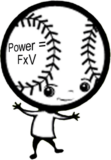You And Your Elbow
Elbow injuries are at epidemic proportions, especially among the younger pitcher. And while no one can predict or control the effects of wear and tear, there are many things that you can do right now to take control of your elbow health and know that you are doing everything within your power to protect this very vulnerable joint.
Why is the elbow so vulnerable?
The elbow, forearm, and wrist are the final receivers of the forces that are summated from the ground and your lower body and trunk. The forces generated are actually greater than what the elbow joint and its ligamentous structures are designed to withstand. The muscular structures surrounding the joint have to assist. In order to do this, the muscles need to be strong and be able to repeat their strength capabilities over and over again throughout the innings.
How to take control…starting now:
Follow the pitch count regulations for your age group.
Proper lower body mechanics which are a prerequisite for proper arm mechanics…for example:
Make sure the lower body is generating the force so the arm doesn’t try to create the force. If the stride foot lands too closed it will block full rotation of the hips/pelvis causing the shoulder girdle to get ahead in the motion. If the stride foot lands too open, it causes hip rotation before stride foot contact. This diminishes the contribution of the power from the lower body.
Proper arm mechanics…for example:
Avoid arm slots (release points) that are too low as they force a straighter elbow causing undue stress.
Avoid allowing the forearm to collapse inward toward your head during the acceleration phase. This not only causes stress at the elbow but the shoulder as well.
Proper timing and sequencing of lower and upper body mechanics…for example:
Make sure the stride foot lands as the ball reaches its early cocked position (facing the shortstop for a RHP).
Square-up to the plate completely (hips and upper body) before you start accelerating the ball.
Proper warm-up and preparation of the elbow, forearm, and wrist before pitching
Warm-up to pitch, don’t pitch to warm-up.
In addition to the shoulder warm-up, be sure and prepare the structures of the arm.
Strength and range of motion of the wrist, forearm, and upper arm musculature.
Adopt a complete strength program for all the joints and muscles of you arm.
Make sure you select exercises that are appropriate to the pitching motion and enhance proper mechanics.
The elbow musculature is involved in stabilization of the forceful extension and deceleration of the arm motion.
The forearm musculature is involved in positioning the ball as well as in rapid rotation of the forearm.
The wrist musculature is involved in accelerating the ball and is responsible for 21% of the velocity of the ball.
The ability to repeat consistent mechanics throughout innings.
Enough cannot be said about the importance of conditioning the pitching motion as well as the pitcher’s body. Organization of consistently-scheduled bullpens with well-planned volumes is essential. Fatigue is the number one reason why mechanics fail in late innings and make you more vulnerable to injury.
Pay attention to symptoms and early detection of serious problems.
The body has its own language for communication to its owner. It is worthwhile to pay attention to it. Unless an injury occurs acutely (in a specific moment), it usually comes with warning signs that if detected early, can possible offset a more serious condition.
Don’t ignore pain, swelling, tingling in fingers, loss of range of motion, or changes in recovery time. Get to a sports physician as soon as symptoms occur.
